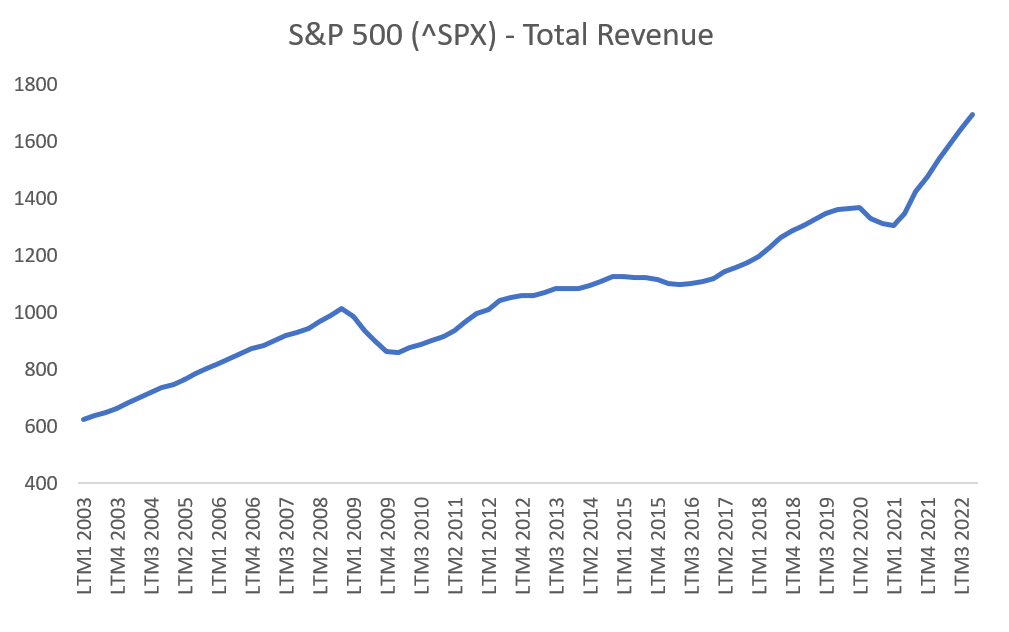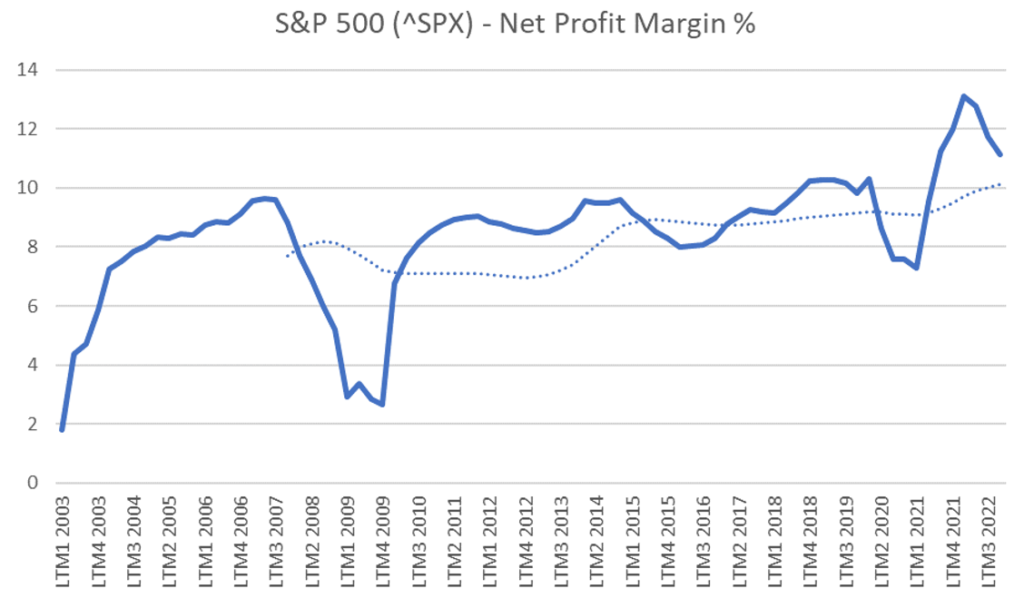As earnings season unfolds, we need to watch two key metrics that could sink the stock market.
More than likely, both will contribute to a sell-off in the coming weeks.
Stock prices go up when investors expect earnings to grow. In general, earnings can grow when companies increase revenue or decrease costs.
Let’s look at revenue first.
Massive Revenue Isn’t Sustainable Every Earnings Season
Over the past two years, revenue for the broad S&P 500 jumped 30%. That’s the highest change on record.

Sales can’t continue growing that fast.
Consumers are stressed. Many spent down savings they built up during the pandemic. Others are worried about their jobs.
Without strong demand, sales will fall. That will pressure profits.
Now let’s look at how likely it is that companies can decrease costs.
Companies Can’t Do Much to Decrease Costs
The net profit margin is the percentage of profit from sales. The current value for the companies in the S&P 500 is 11.13%. This means companies make an average of $11.13 on $100 in sales.
Over the past 20 years, the average margin has been about 8.4%. The next chart includes the five-year moving average (dotted blue line), which is 10%.

This metric tends to fluctuate around its moving average.
That makes sense.
When a business opportunity offers above-average profits, companies do their best to take advantage of it.
As they focus on that opportunity, they increase the supply of that service or good. Increased supply leads to lower prices and lower profit margins.
Below-average returns lead companies to invest elsewhere. This decreases supply and eventually leads to higher prices and higher profit margins.
Right now, margins are falling. They seem to be heading toward their moving average.
That will hurt earnings by one or two cents per dollar of sales. And with sales possibly declining, earnings are likely to grow slowly or even contract.
Of course, companies have another option, but even that situation has changed.
Companies can increase earnings per share even if revenue and margins decline by buying back shares.
But the Inflation Reduction Act includes a 1% excise tax on buybacks starting this year.
We don’t know if companies will change plans based on that tax, but it’s yet another headwind the market faces as earnings season continues.
Michael Carr, CMT, CFTe is the editor of two investment trading services — One Trade and Precision Profits — and a contributing editor to The Banyan Edge. He teaches Technical Analysis and Quantitative Technical Analysis at the New York Institute of Finance. Follow him on Twitter @MichaelCarrGuru.





